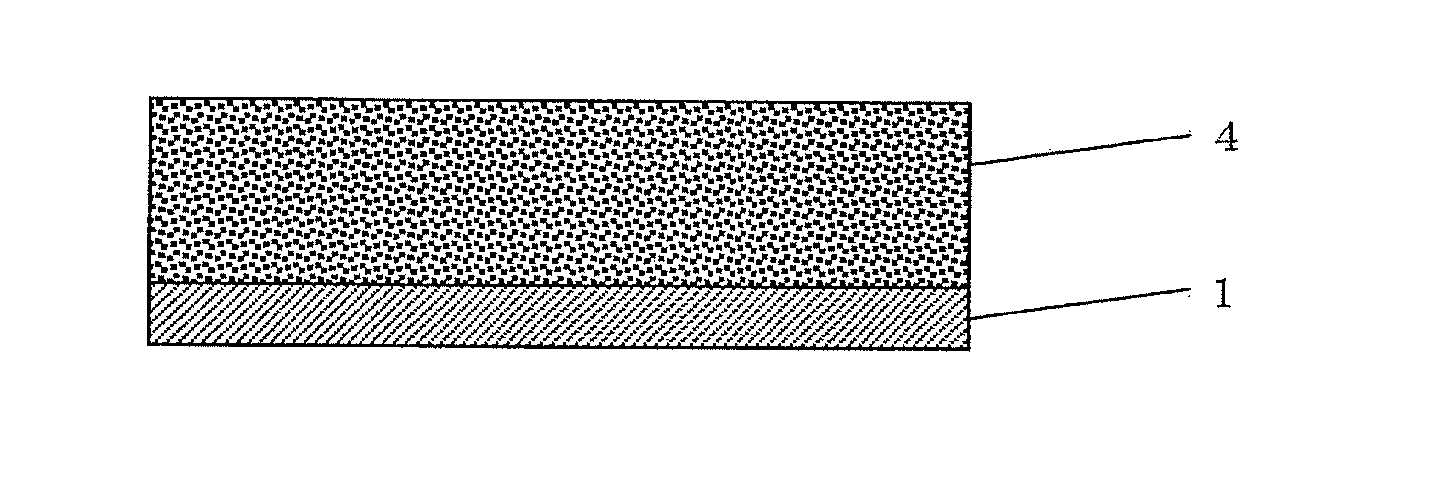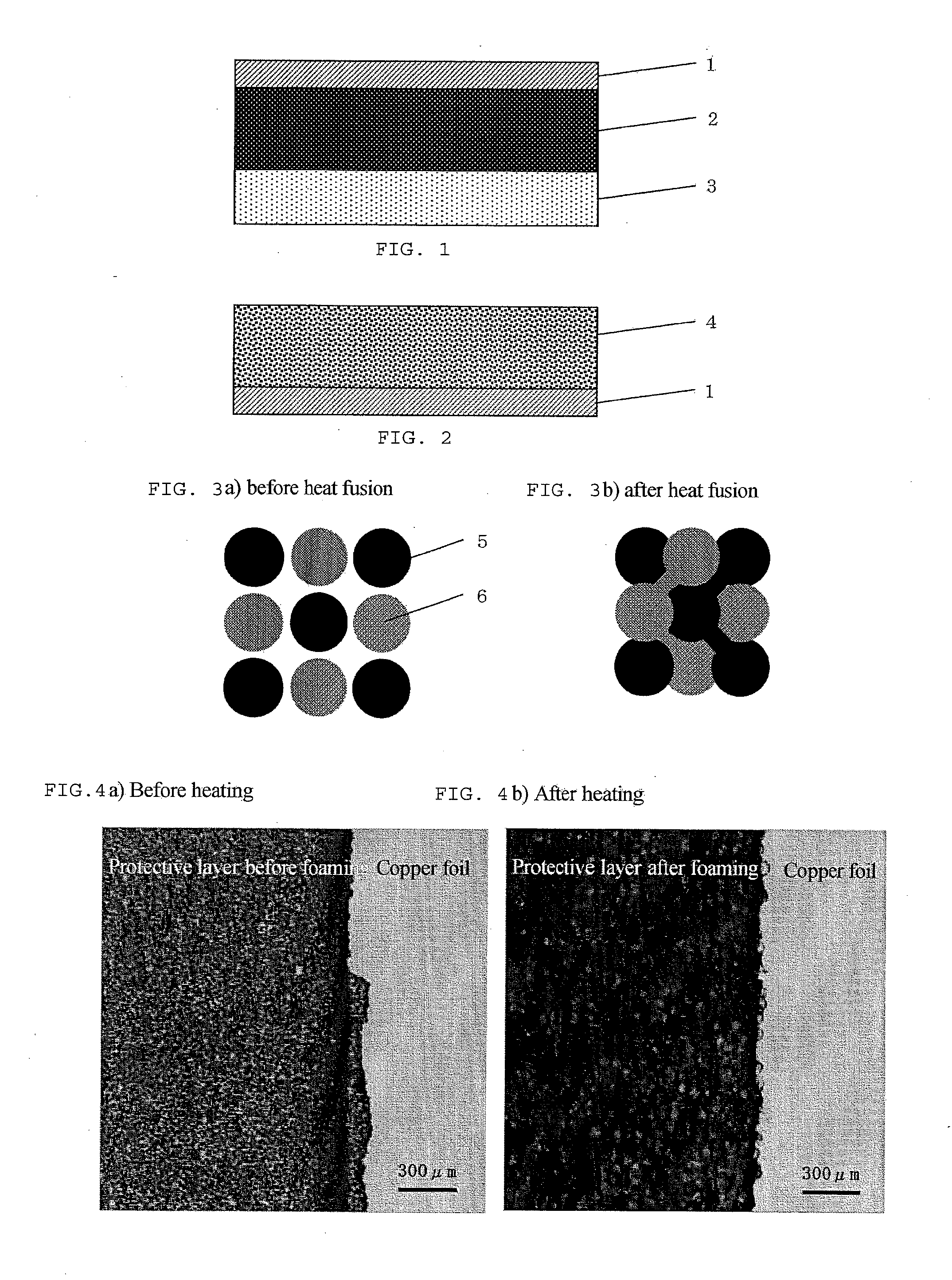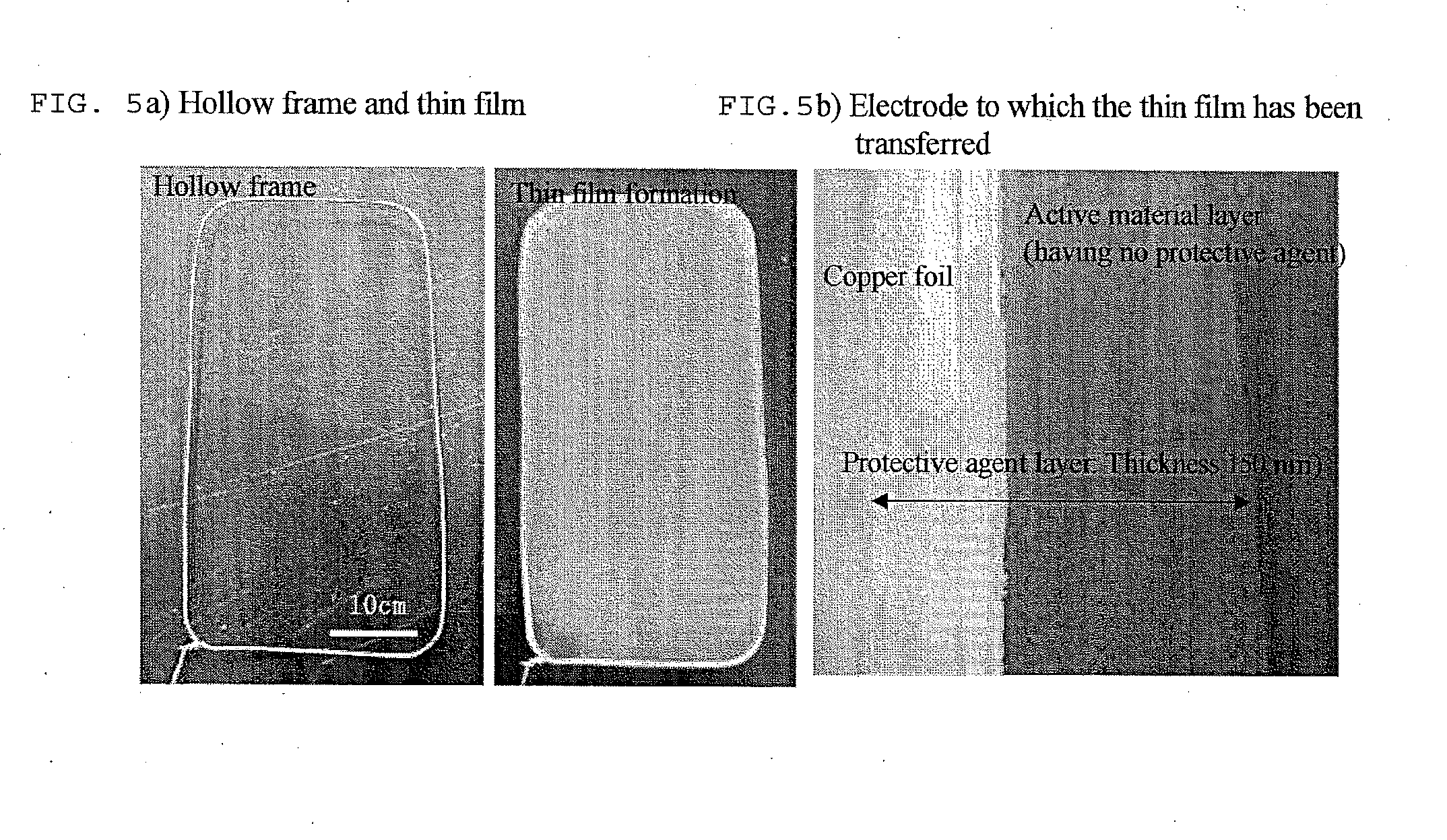Battery electrode or separator surface protective agent composition, battery electrode or separator protected by the composition, and battery having the battery electrode or separator
a protective agent and composition technology, applied in the direction of electric vehicles, electric vehicle manufacturing processes, textiles and papermaking, etc., can solve the problems of poor safety, unsatisfactory high-rate charge/discharge characteristics, unsatisfactory charge/discharge capacity, etc., to achieve excellent electrolytic solution impregnation properties, improve ionic conductivity and mechanical strength as well as heat resistance, and improve the effect of safety
- Summary
- Abstract
- Description
- Claims
- Application Information
AI Technical Summary
Benefits of technology
Problems solved by technology
Method used
Image
Examples
example 1
[0185]In Example 1, a method is described in which a lithium-ion secondary battery is produced using an electrode having a negative electrode coated with the battery electrode or separator surface protective agent composition which comprises two types of organic particles.
[0186](Production of the Battery Electrode or Separator Surface Protective Agent Composition)
(Preparation of Fusible Organic Particles 1)
[0187]Cyanoethylated pullulan (Cyanoresin CR-S, manufactured by Shin-Etsu Chemical Co., Ltd.; softening temperature: 90 to 110° C.; hydrogen bonding functional group value: 0.0005 mol / g or less) was pulverized by means of Nano Jetmizer (NJ-30, manufactured by Aishin Nano Technologies Co., Ltd.) to prepare cyanoethylated pullulan particles having an average particle diameter of 3 μm.
(Preparation of Fusible Organic Particles 2)
[0188]A partially saponified polyvinyl alcohol (PVA-205, manufactured by Kuraray Co., Ltd.; hydrogen bonding functional group value: about 0.019 mol / g):ethyle...
example 2
[0200]In Example 2, a method is described in which a lithium-ion secondary battery is produced using an electrode having a negative electrode coated with the battery electrode or separator surface protective agent composition which comprises two types of organic particles.
[0201](Production of the Protective Agent Composition for a Battery Electrode)
(Preparation of Fusible Organic Particles 1)
[0202]A 15% N-methylpyrrolidone solution of polyvinylidene fluoride (Kureha KF Polymer #1120, manufactured by Kureha Corporation; softening temperature: 160 to 180° C.; hydrogen bonding functional group value: 0.0001 mol / g or less) was subjected to spray drying to prepare polyvinylidene fluoride particles having an average particle diameter of 3 μm.
(Preparation of Fusible Organic Particles 2)
[0203]Organic particles 2 were prepared by the same method as in Example 1.
(Mixing of the Two Types of Fusible Particles)
[0204]A powder mixture was prepared as the battery electrode or separator surface prot...
example 3
[0210]In Example 3, a method is described in which a lithium-ion secondary battery is produced using an electrode having a negative electrode coated with the battery electrode or separator surface protective agent composition which comprises two types of organic particles and a solvent.
(Preparation of Fusible Organic Particles 1)
[0211]Organic particles 1 were prepared by the same method as in Example 2.
(Preparation of Fusible Organic Particles 2)
[0212]Organic particles 2 were prepared by the same method as in Example 1.
(Preparation of a Composition Comprising the Two Types of Fusible Particles)
[0213]6,000 g of 2-methoxyethoxyethyl acetate, 700 g of the above-prepared organic particles 1, and 300 g of the above-prepared organic particles 2 were placed in a 10 L beaker and stirred by means of a propeller mixer until the resultant mixture became uniform to obtain a liquid composition as the battery electrode or separator surface protective agent composition.
(Production of a Positive El...
PUM
| Property | Measurement | Unit |
|---|---|---|
| Molality | aaaaa | aaaaa |
| Fraction | aaaaa | aaaaa |
| Fraction | aaaaa | aaaaa |
Abstract
Description
Claims
Application Information
 Login to View More
Login to View More - R&D
- Intellectual Property
- Life Sciences
- Materials
- Tech Scout
- Unparalleled Data Quality
- Higher Quality Content
- 60% Fewer Hallucinations
Browse by: Latest US Patents, China's latest patents, Technical Efficacy Thesaurus, Application Domain, Technology Topic, Popular Technical Reports.
© 2025 PatSnap. All rights reserved.Legal|Privacy policy|Modern Slavery Act Transparency Statement|Sitemap|About US| Contact US: help@patsnap.com



